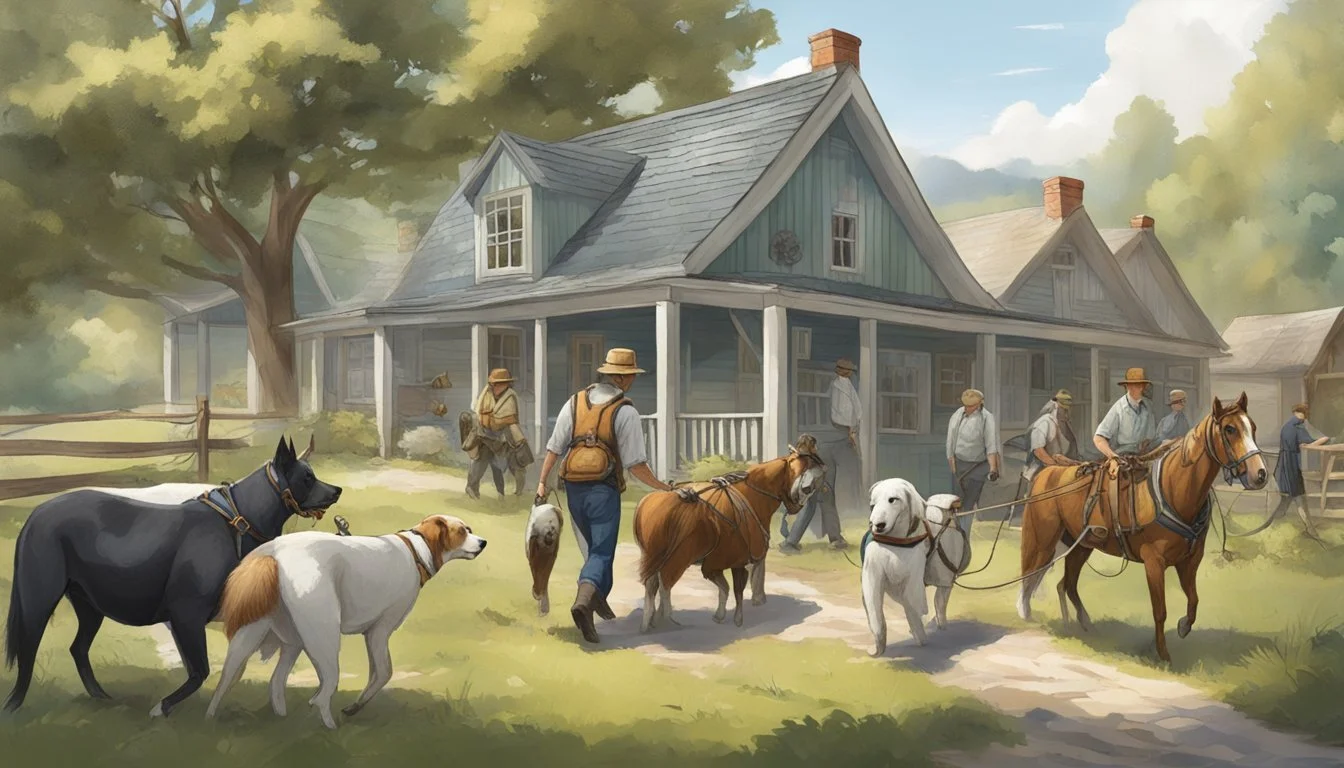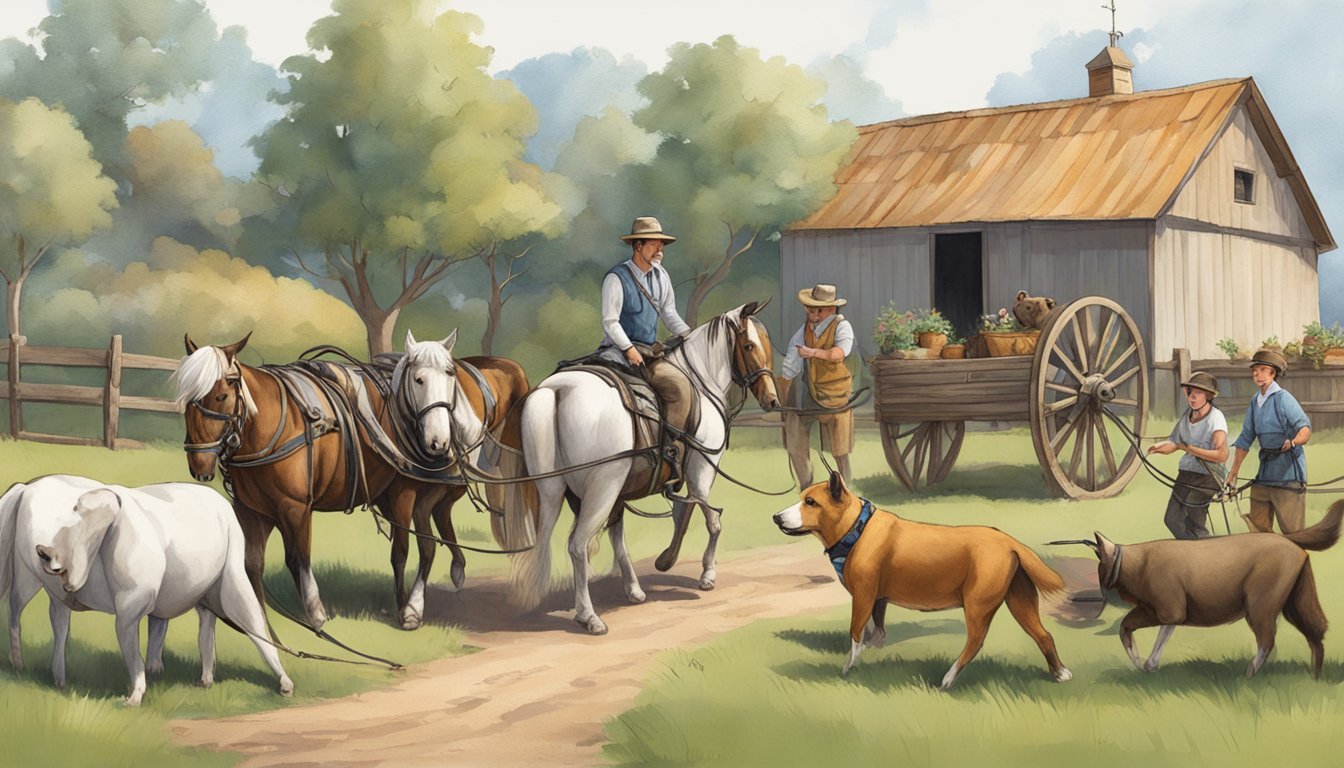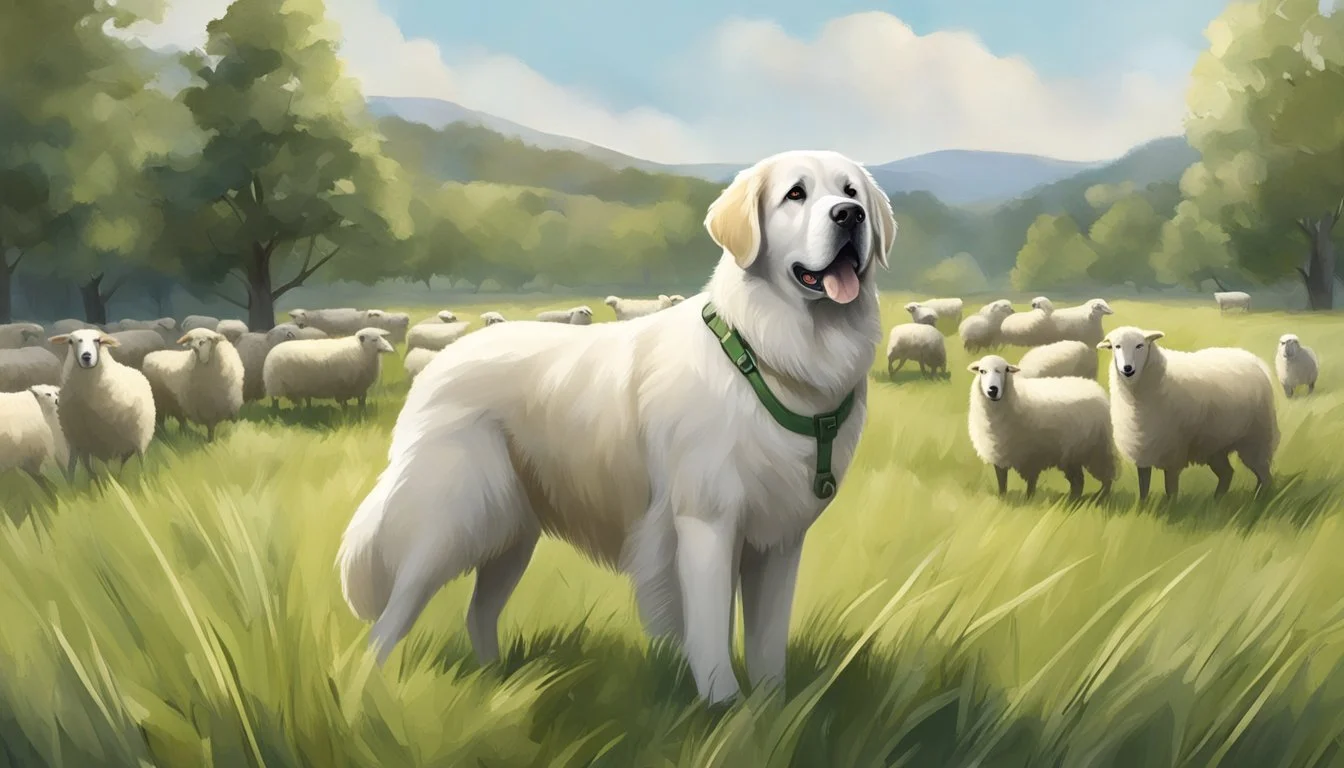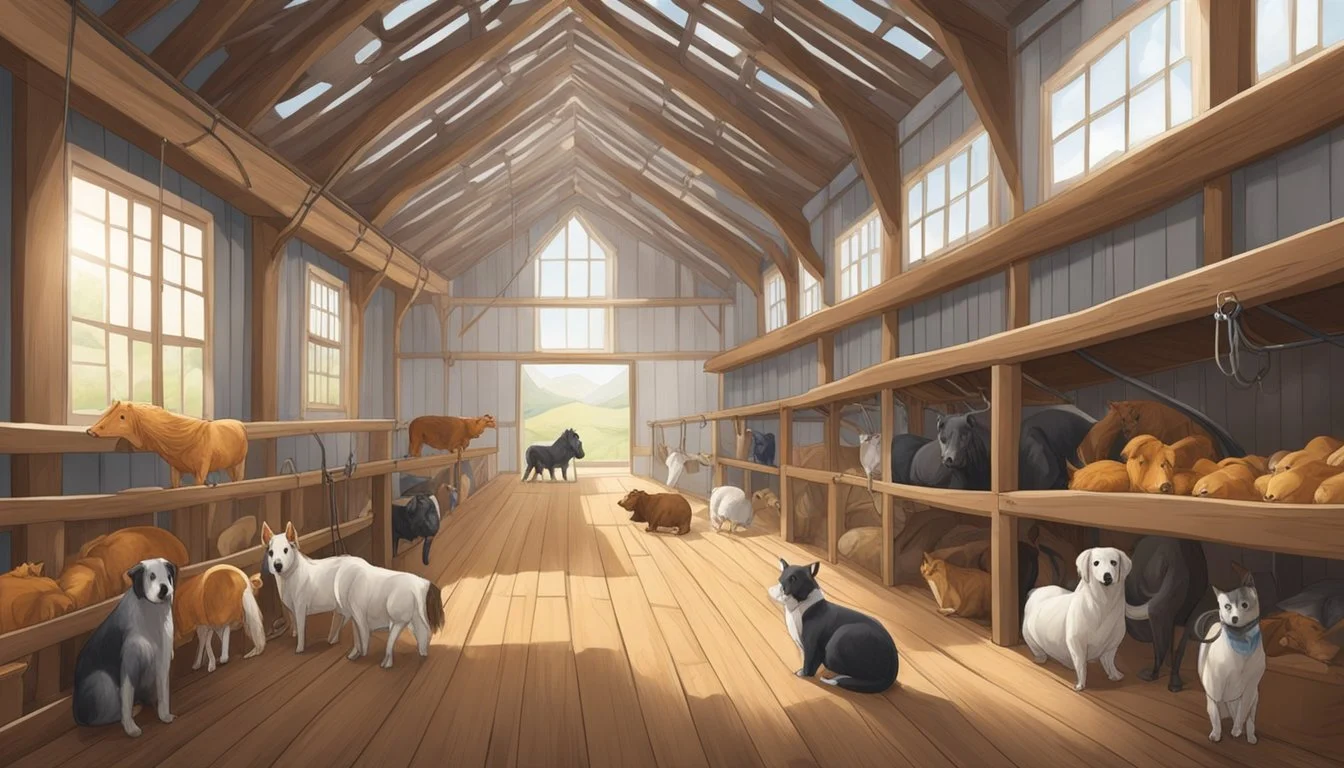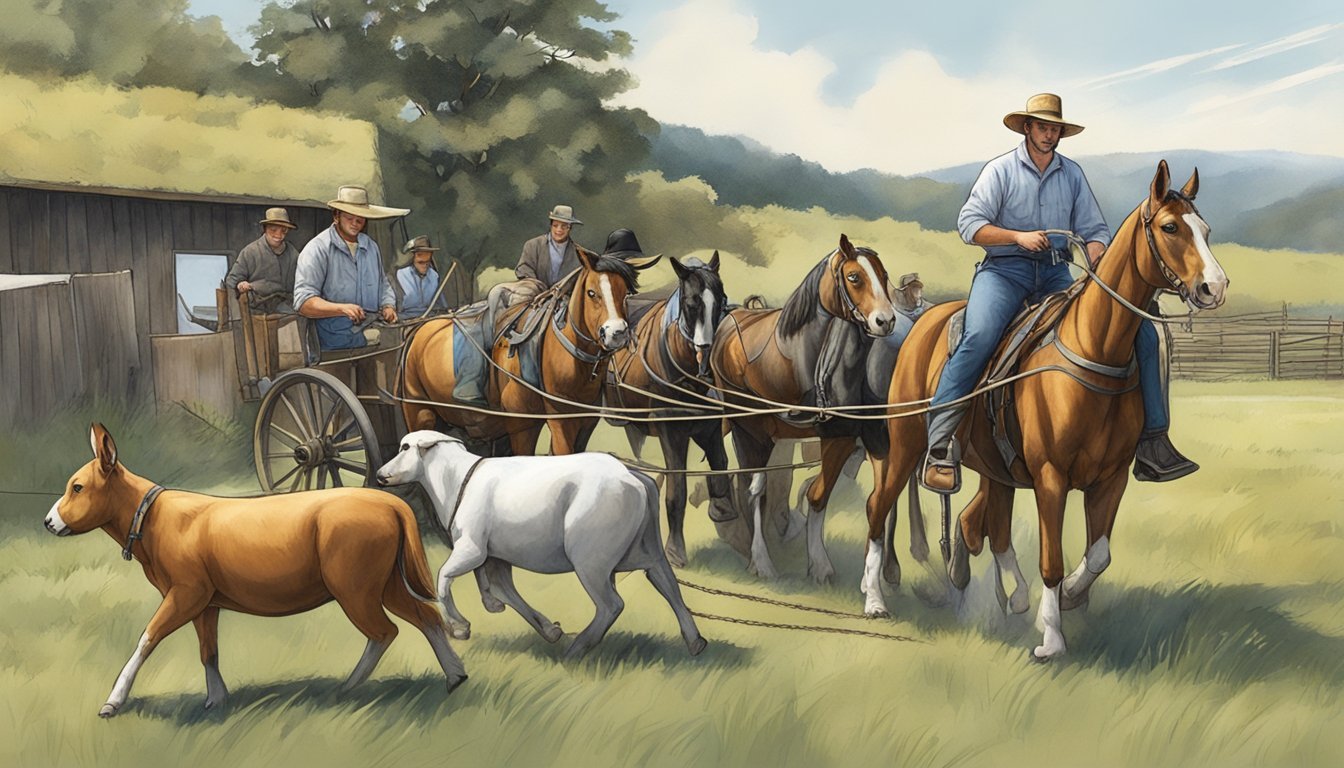The Ultimate Guide to Animal Harnesses and Leads for Homesteading
Essential Tips for Handling and Training Livestock
Homesteading requires a diverse set of skills, and one of the key areas is the proper handling and training of livestock. Whether it's moving animals from one area to another, controlling them for health inspections, or training them for work or other behaviors, the right harnesses and leads can make all the difference. These tools are not just about control—they ensure safety for both the homesteader and the animals, facilitating a symbiotic relationship where both parties benefit from valuable cooperation and understanding.
Choosing the appropriate harnesses and leads for different types of livestock is a crucial element of effective animal management. Cattle, horses, goats, and smaller animals like rabbits each have unique needs that require specific types of equipment. A well-designed harness can help distribute force evenly across an animal's body, reducing stress and the risk of injury. Similarly, leads must be strong enough to handle the animal yet gentle enough to prevent discomfort.
For the homesteader, understanding the nuances of animal behavior and how different tools can be used to influence it is vital. This knowledge ensures that training and everyday handling proceed as smoothly as possible. Knowledgeable use of these tools not only enhances the efficiency of daily tasks but also promotes a peaceable environment where livestock can thrive. As such, mastering the use of animal harnesses and leads is an indispensable component of successful homesteading.
Understanding the Basics of Animal Harnesse
The appropriate harness can significantly improve the management and training of livestock on a homestead. It is a crucial tool for ensuring the animals' safety while enabling handlers to maneuver animals like sheep, goats, cattle, pigs, and horses effectively.
Types of Harnesses for Different Livestock
Sheep and goats often require lightweight, comfortable harnesses that allow for ease of movement while providing control. For these animals, web-strap harnesses are common, which can include configurations like H-harnesses or vest harnesses.
Cattle harnesses are more robust, featuring stout materials capable of withstanding greater force. Designs like the yoke harness distribute force evenly, helping during plowing or pulling. For dairy cows, a simpler stanchion collar may be used during milking.
Pigs are guided with a combination of harnesses and leads, with harness types varying according to the pig's size and the training required. Pig harnesses usually have a secure, snug fit to prevent slipping out due to their less defined necks.
Horses are often equipped with leather or synthetic harnesses, designed for tasks ranging from carriage pulling to riding support. Driving harnesses for horses should have a breastplate to distribute the load during heavy work.
Selecting the Right Size and Material
Selecting the correct size is paramount for the comfort and safety of the animal. Here is a basic guide for measuring:
Chest Girth: Measure behind the front legs where the harness will sit.
Neck Circumference: Important for collars and some harness types.
Length: Measure from the neck to the base of the tail for back straps.
Material choice is crucial:
Leather: Durable and flexible, ideal for horses and cattle, though requires maintenance.
Nylon: Light and easy to clean, suitable for smaller livestock.
Chain: Occasionally used for large or strong animals that require extra control.
Safety Features and Durability
A harness must be safe and durable. Essential safety features include:
Reflective strips: For visibility during low light conditions.
Breakaway clips: To prevent entanglement and injury if the harness catches on something.
Padding: Reduces the risk of chafing and increases comfort.
Durability hinges on quality craftsmanship and material. Regular maintenance, such as cleaning leather harnesses and checking for wear and tear in synthetic materials, is vital for ensuring longevity and the ongoing safety of the animals.
The Importance of Proper Training for Livestock
Proper training for livestock is foundational in homesteading as it ensures safety, enhances animal welfare, and facilitates daily operations. Effective training depends on consistent techniques and a good understanding of animal behavior to foster trust and obedience.
Establishing Trust and Building Relationships
Building a relationship of trust between the homesteader and livestock is the first step in any successful training program. Animals that trust their handlers are more receptive to training, which can be achieved through:
Consistent daily interactions: Routine care and handling lay the groundwork for trust.
Positive reinforcement: Rewards for desired behavior reinforce trust and cooperation.
Training Techniques and Commands
Knowledgeable application of training techniques is crucial for clear communication and effective command execution. Key training areas include:
Basic commands: Simple, consistent commands such as "come," "stay," and "move" help in managing livestock.
Obedience training: This forms the core of livestock training to ensure that animals respond appropriately to handlers.
Handlers employ a variety of tools, such as leads and harnesses, to aid in training and control, making it important to:
Choose the right equipment for the specific type of livestock.
Introduce equipment gradually and with patience to avoid stress.
Common Training Issues and How to Overcome Them
It is inevitable to encounter issues during the training process, but they can be managed by:
Identifying the root cause: Whether it's a lack of understanding, fear, or health issues, recognizing the problem is the first step.
Adjusting methods: Employ different techniques or tools if current ones are ineffective.
To overcome these challenges, the handler may need to:
Utilize incremental learning: Break down tasks into smaller steps for easier learning.
Maintain a calm demeanor: Animals are sensitive to emotions; staying composed can prevent exacerbating the issue.
Selecting and Using Leads Effectively
Selecting the right type of lead and utilizing it with proper techniques is crucial for effective animal training and control in homesteading. The comfort of the animal and ergonomics for the user are paramount considerations.
Different Types of Leads for Control and Training
Leads come in various designs, each suited for specific training programs and animal breeds. A Slip Lead is a traditional choice, which tightens when the animal pulls, aiding in training against pulling behavior. Retractable Leads allow animals to explore, but should be used with caution as they may not provide immediate control. For larger breeds requiring firm handling, Heavy-Duty Leads made of stronger materials are recommended.
Slip Lead: Quick control, self-tightening
Retractable Lead: Offers exploration, flexible length
Heavy-Duty Lead: Sturdy, for larger or strong-willed breeds
Lead Training Techniques
Effective training with leads involves consistent, positive reinforcement techniques tailored to the homestead animal's breed and behavior. Start by acclimating the animal to the lead through short, frequent sessions. Use consistent commands and reward compliance with treats or praise. When initiating lead training, keep the leads short to maintain control, gradually increasing the length as they become more compliant.
Acclimate with short sessions
Use consistent commands
Gradually increase lead length
Ensuring Animal Comfort and Ease of Use
Animal comfort is essential for successful lead training. Select a lead that corresponds to the animal's size and strength to prevent discomfort or injury. For the user, ergonomically designed handles prevent fatigue during lengthy training sessions. Regular inspection of the lead for wear and tear ensures safety for both the animal and the user.
Match lead to animal size and strength
Comfortable handles for user
Regular lead inspections for safety
Living with Livestock Guardian Dogs
Livestock guardian dogs are integral to the protection and management of livestock on a homestead. These dogs deter predators and bond closely with their charges—be it cattle, sheep, or goats—ensuring their safety.
Breeds and Characteristics of Livestock Guardian Dogs
Historically, certain dog breeds have been selected for their natural protective instincts and ability to bond with livestock. Common breeds include the Great Pyrenees, Anatolian Shepherd, and Maremma Sheepdog, known for their vigilance, loyalty, and strength. These dogs exhibit a calm yet assertive demeanor, with a natural instinct to guard their herd.
Great Pyrenees: Known for their patience and protective instincts.
Anatolian Shepherd: Highly intelligent and capable of making independent decisions.
Maremma Sheepdog: Strongly bonded to their flock and naturally nurturing.
Training and Bonding with Your Guardian Dog
The efficacy of a livestock guardian dog is heavily dependent on proper training and bonding. Introduction to livestock should occur early, often as a pup to ensure they identify with the herd. Consistent, positive reinforcement techniques are imperative in training to respond to basic commands such as "come," "stay," or "lie down."
Introduce the dog to livestock early to establish bonding.
Implement consistent training sessions using positive reinforcement.
Teach essential commands that facilitate management and control.
Protocols for Protecting Livestock from Predators
Effective protection against common predators like coyotes and wolves requires a proactive and systematic approach. Livestock guardian dogs should be able to patrol boundaries and discourage predator incursions. They must also remain alert to potential threats and exhibit warning behaviors.
Set clear boundaries for patrolling.
Train dogs to recognize and deter common predators.
By incorporating the physical attributes and temperaments of specific breeds with consistent training and protocols, livestock guardian dogs can effectively protect homestead livestock from potential threats.
Creating a Safe and Stimulating Environment for Livestock
Creating a safe and stimulating environment for livestock entails more than just meeting their basic needs. It encompasses pasture management, appropriate housing and shelter, and protection against harsh weather. This requires a planned approach to ensure their welfare and productivity.
Pasture Management and Rotational Grazing
Proper Pasture Management is crucial for maintaining soil health and providing a nutrient-rich diet for livestock. Homesteaders should practice Rotational Grazing where animals are moved between pastures to prevent overgrazing and allow for vegetation recovery. This can be executed as follows:
Subdivide larger pastures into smaller areas.
Allow livestock to graze one area at a time for a predefined period.
Rotate the animals before the grass is grazed below 3 inches to avoid root damage.
Housing and Shelter Requirements for Different Animals
Each species of livestock requires specific Housing and Shelter arrangements to protect them from predators and environmental stressors. For instance, cattle need sturdy, ventilated shelters, while chickens benefit from secure coops. Here are the essential space requirements:
Cattle: 20-50 square feet per animal inside a barn.
Sheep and Goats: 15-25 square feet per animal in a well-insulated structure.
Poultry: 2-3 square feet per chicken within the coop and access to an outdoor run.
Handling Inclement Weather and Providing Insulation
To Protect Livestock During Inclement Weather such as extreme cold, heat, or precipitation, proper insulation is key. The following measures can be taken:
Use straw beddings to ensure that animals stay dry and warm.
Employ windbreaks such as trees or constructed barriers around housing.
Make sure shelters are capable of retaining heat in cold conditions and offer plenty of ventilation during hotter periods.
Holistic Approach to Raising Healthy Livestoc
In the realm of homesteading, a holistic approach to raising livestock fosters robust health and maximizes productivity. This philosophy encompasses a well-rounded regimen of proper nutrition, routine health evaluations, and stringent sanitation standards.
Nutrition and Feeding for Optimal Health
Proper nutrition is the cornerstone of maintaining healthy livestock. Animals require a well-balanced diet, tailored to their specific stage of life, breed, and health status.
Components of a Balanced Diet:
Carbohydrates for energy
Proteins for growth and repair
Fats for energy storage and insulation
Vitamins and minerals for metabolic processes
Ensuring a mix of forage, grains, and supplements can lead to improved health and better productivity.
Routine Health Checks and Preventative Measures
Regular health checks are essential in the early detection and prevention of diseases. Preventative measures such as vaccinations and parasite control contribute significantly to the overall well-being of livestock.
Checklist for Health Inspections includes:
Inspection for signs of illness or distress
Monitoring weight and growth rates
Evaluation of coat, hoof, and horn condition
A schedule for routine health assessments should be established to maintain consistent monitoring.
The Role of Clean Water and Proper Sanitation
Clean water is a critical resource for livestock, influencing both their health and the safety of the food they produce. Adequate sanitation practices help prevent the spread of diseases and increase the overall cleanliness of the living environment.
Sanitation Protocols:
Regular cleaning of living quarters and feeding troughs
Safe disposal of waste products
Quarantine of new or sick animals to prevent disease spread
By providing access to fresh water and maintaining hygienic conditions, farmers significantly reduce the risk of contamination and illness in their herds and flocks.
Integrating Livestock into a Self-Sufficient Homestead
To achieve self-sufficiency on a homestead, one must integrate animal husbandry strategically with other aspects of farming such as gardening, composting, and infrastructure development. This ensures a balanced ecosystem and the efficient production of food.
Balancing Animal Husbandry with Gardening and Composting
A well-planned homestead incorporates livestock, which contributes to garden health through manure production. Manure is a natural fertilizer, which, when composted, enhances soil fertility and structure, promoting robust plant growth. The key is to establish a cycle: gardens can provide feed for animals, and animals can provide manure for composting, which in turn nourishes the garden.
Gardening: Allocate specific plots for vegetables and herbs close to water sources and shelter.
Composting: Set up compost bins near animal enclosures for easy transfer of manure.
Producing Dairy, Eggs, and Meat for Self-Reliance
Livestock such as cows, goats, chickens, and sheep are pivotal for a self-sufficient lifestyle, supplying essentials like milk, eggs, and meat.
Dairy: Choose breeds like Jersey cows or Nubian goats for high milk yield.
Eggs: Keep a flock of chickens for a steady egg supply; consider dual-purpose breeds for both egg and meat production.
Meat: Raise larger animals like cattle or smaller ones like rabbits depending on space and resource availability.
Building Structures and Fencing for Animal Safety
Robust structures and secure fencing are crucial for protecting livestock and ensuring their well-being on a homestead.
Shelters: Construct sturdy shelters against weather extremes, predators, and to provide a comfortable living area for animals.
Fencing: Install durable fencing to contain livestock within designated areas, prevent escape, and protect from predators.
Shelters and fencing are more than just safety measures; they also establish boundaries for grazing, which can be rotated to prevent overuse of any one area.
Advanced Topics in Livestock Handling
In advancing livestock handling, breeders must consider sustainable breeding practices, incorporate efficient technology and equipment, and strategize for homestead expansion. These components are essential for the long-term success and scalability of livestock management.
Breeding Practices for Sustaining Livestock Populations
The sustainability of a homestead's livestock population hinges on sound breeding practices. Selective breeding is a critical tool, allowing breeders to enhance desirable traits such as disease resistance, productivity, and temperament. They should maintain detailed records of lineage and traits to help guide future breeding decisions. Genetic diversity is crucial; therefore, a breeder may also introduce new breeds to mitigate inbreeding.
Utilizing Technology and Equipment for Efficiency
Embracing technology is not a luxury but a necessity for modern homesteaders seeking efficiency. Automated feeders and watering systems save labor and ensure consistency in animal care. For monitoring health and behavior, RFID tags and GPS tracking provide actionable data that lead to informed decisions. Investing in durable and ergonomic equipment is essential to handle animals with minimal stress and lower the risk of injuries to both livestock and handlers.
Strategies for Expanding Your Homesteading Endeavors
Expanding a homestead's livestock operations requires strategic planning and investment. A breeder should evaluate the current setup and determine the capacity to support additional livestock. This may involve scaling up infrastructure, such as barns and fencing, which must be done with consideration for zoning regulations and sustainable land management. Diversifying into different breeds or species may offer new market opportunities but comes with the need for adapted handling and care practices.

